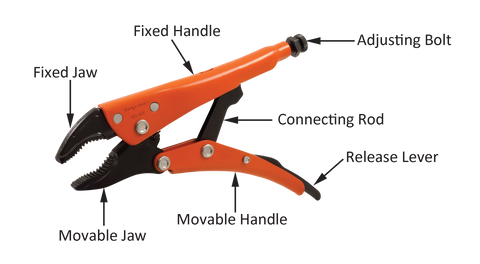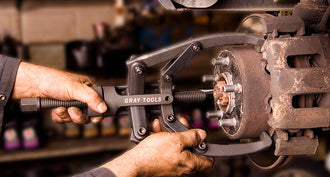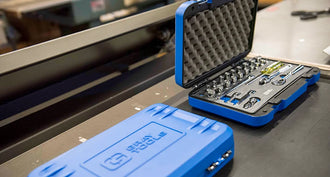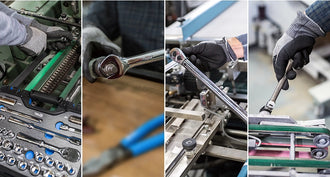Locking Tools 101
- Gray Tools Official Blog
- 21 Jan, 2016
Have you ever wished you had an extra hand or pair of hands when working on a project?
In these instances locking tools can come in extremely handy. They are designed to act like a third hand when you need to grab, clamp or hold a workpiece in place.
Locking pliers are designed to lock on to a nut, bolt, sheet metal, round metal and pipes or a hundred other small objects with a thick pair of serrated jaws.
To use them, the jaws need to be set slightly smaller than the size of what you are trying to clamp. Then, as pressure is applied to the handles, a series of levers and pivot points lock the jaws in place.
In most cases, to unlock the jaws a release lever needs to be tripped, but with some designs, the handles simply need to be pulled apart.
The most commonly used locking tools are locking pliers (in a variety of shapes and styles) and C-clamps.
The Anatomy of a Locking Tool

While the jaws of ordinary pliers are joined by a single link, locking pliers are multi-link tools that connect a variety of jaw designs with the corresponding handles.
The main components of a locking tool that provide its functionality are:
- Fixed handle which houses the adjusting bolt. The body or fixed handle features a channel that links and guides the movable jaw.
- Adjusting bolt at the end of the fixed handle has a dual functionality: to adjust the jaw openings to fit the size of the piece to be clamped, and micro-adjust the clamping force.
- Movable handle
- Connecting rod
- A fixed jaw and movable jaw that hold the piece in place.
- eliminate the need to constantly squeeze the handles in order to hold the piece in place.
- put tremendous pressure on four points of any style nut or bolt head, making them ideal for tightening, clamping, twisting and turning.
- stay adjusted for repetitive use.
As seen above, locking tools can be very helpful. On a more cautionary note, here are some things you need to take into account:
- Too much pressure on the jaws can damage delicate surfaces. In this case, you must use the locking pliers with a special pad on the jaws.
- Too much clamping pressure makes it difficult to use the quick release mechanism. In this care you would need to use another tool to unlock the pliers.
Things to Consider When Shopping for Locking Tools
- Type of release mechanism: the mechanism that releases the clamping pressure varies by manufacturer. There are two popular designs: one requires the release lever be pushed away from the bottom handle (orange C-Clamp pliers below), while the other requires it to be moved towards the bottom handle (Nickel plated C-Clamps pliers below). Choosing one over the other is a matter of personal comfort and preference.


- Metal versus padded handles: metal handles are more resistant to welding spatter and easier to clean, while padded handle should (at least in theory) be more comfortable. The best way to decide on which one feels most comfortable in your hands is trying them out.
- Nickel versus epoxy resin coated handles: epoxy paint finish provides up to 10 X more corrosion resistant than nickel coating.
In the end, you will be able to judge the quality of a locking tool by its construction, finish, the ease of operation, and its warranty.
How to Best Care for Locking Pliers
Quality hand tools are a long term investment. In order to extend the life of your tools and have them fully functional when you need them, follow these steps to care for your locking pliers:
- Regularly oil the tools, especially the moving mechanism.
- Do not abuse the tools, or use them for anything else beyond their intended purpose.
- Always select a the right-size tool for the project. Using tools that are too large or small can pose an injury risk.
- Never use the tools as a structural support.
- Never expose the tools to direct heat or electricity sources.
If you are in the process of building your locking tools collection the best bet would be to start with 5", 7" and 10" locking pliers in curved jaws and long nose design. Other must haves include the sheet metal clamp and locking C-clamp models.
Like with most tools that come with lifetime warranty, choosing your locking pliers is a long term investment. The key is to find the product that provides the quality you need at a price you feel justified paying.




